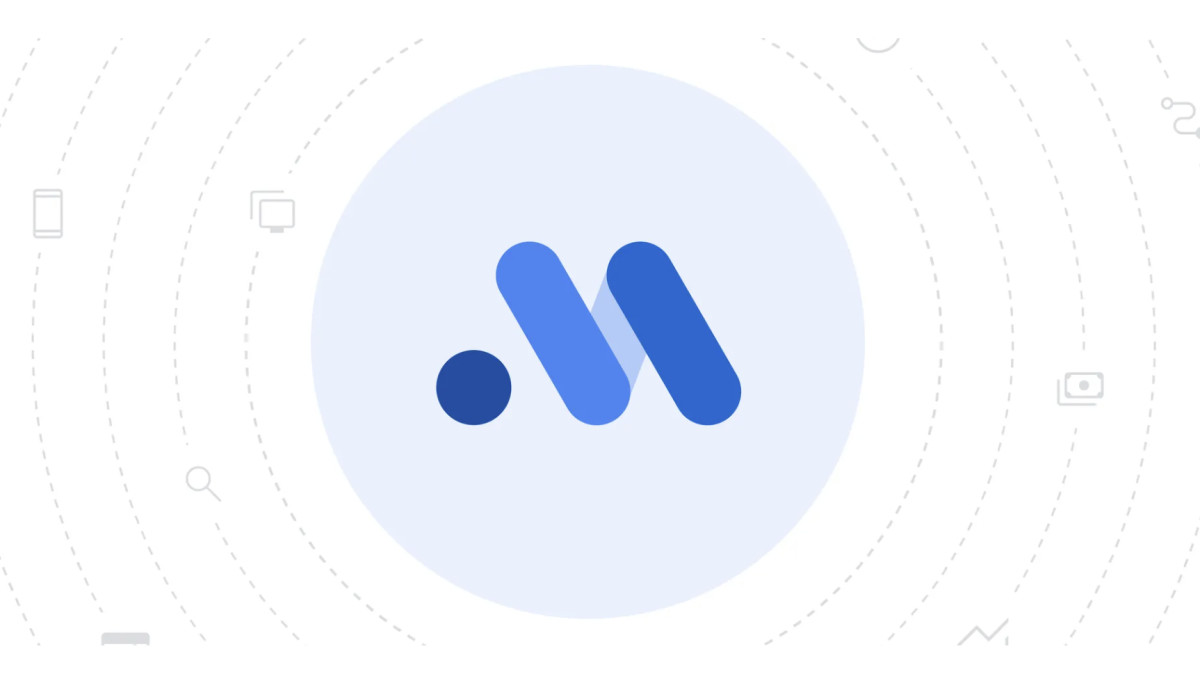Marketing Mix Models (MMM’s) are the hot topic in digital at the moment.
Brands are looking for better ways of measuring the impact of their marketing efforts and are moving away from outdated practices and attribution modeling.
As of March 2024, Google announced that their MMM solution has been undergoing testing by hundreds of brands and that we will all get the chance to use very soon.
Fast forward to January 2025 and Google Meridian is now available to everyone, so let’s dive into everything MMM and Meridian.
WHAT ARE MARKETING MIX MODELS?
Marketing Mix Models (MMM’s) are analytical tools used by businesses to measure the impact of various marketing tactics on sales and overall performance.
Through advanced statistical techniques like regression analysis (“a set of statistical processes for estimating the relationships between a dependent variable“), MMM quantifies the effectiveness of each marketing channel, enabling brands to optimise their strategies more effectively.
The overarching goal of running MMM is to find the best possible use of time and resource get the strongest results for the business.
For example, by analysing how fluctuations in advertising spend influence sales figures, companies can effectively determine the return on investment (ROI) for various marketing channels.
MMM aims to move channel siloes aside, no longer looking at each channel in isolation through the lens of a singular KPI that may differ across channel, network, etc.
The number of brands adopting MMM has grown 13% since 2021 and McKinsey found that MMM can lead to marketing efficiency gains of up to 30% and incremental top-line growth of up to 10% without increasing marketing budget.
As with any statistical model, Marketing Mix Models have limitations:
- Data dependency: MMM heavily relies on historical data, which may not always be available (or any good).
- Time lag: It can be challenging to account for delayed effects of marketing investments, making it difficult to assess immediate impacts on sales.
- External factors: MMM might undervalue external influences such as economic shifts, competitive actions, or market trends that can significantly affect outcomes.
- Skill requirements: Requires a certain level of statistical and analytical skill to interpret results and refine models effectively.
- Assumption reliance: Many models rely on simplifying assumptions that may not hold true in every market scenario, potentially leading to misleading conclusions.
Aside to the limitations with MMM as a statistical model, one of the most common roadblocks we face is that brands are moving at such a fast pace that pulling back from channel specific targets and investing in the legwork to get up and running just isn’t feasible.
This is where Google Meridian can help.
WHAT IS GOOGLE MERIDIAN?
Google Meridian is an advanced Marketing Mix Modeling solution designed to help brands make data-driven media investment decisions with greater accuracy and efficiency.
Developed by Google and officially launched in March 2024, Meridian leverages statistical methodologies, machine learning, and automation to streamline MMM processes, making them more accessible and actionable for brands of all sizes.
Unlike traditional MMM, which often requires extensive manual data processing and modeling expertise, Google Meridian simplifies the process by automating data ingestion, model calibration, and output interpretation.
This allows brands to focus on strategic decision-making rather than getting bogged down in complex analytics.
As of January 2025, Google announced that Meridian is now available to all marketers and data scientists.
Ultimately, Google Meridian aims to democratise MMM by making it easier for brands to move beyond outdated attribution (e.g. ppc last click) and channel-specific metrics.
Instead, it provides a full-funnel, data-driven approach to marketing measurement, ensuring that brands can allocate their budgets more effectively.
KEY FEATURES AND BENEFITS OF GOOGLE MERIDIAN
Google Meridian provides a scalable solution for measuring marketing effectiveness. Here are its key features:
- Automated Data Processing: Meridian streamlines MMM by automating data ingestion, cleaning, and model calibration. This removes much of the manual effort traditionally required for MMM analysis.
- Customisable Models: Brands can tailor the model to their business requirements, adjusting for factors like industry trends, seasonal fluctuations, and competitive actions (a big one being when competitors go into sale).
- Granular Cross-Channel Analysis: Meridian evaluates the impact of different marketing channels (paid search, social media, TV, offline media, etc.) within a unified framework, eliminating siloed attribution models.
- Machine Learning-Powered Insights: Google’s AI helps improve model accuracy and prediction capabilities, ensuring brands get the most reliable insights for strategic decision-making.
- Scenario Planning and Forecasting: Meridian enables marketers to run simulations, test different budget allocations, and predict the impact of potential marketing investments before execution.
- Scalable and Fast Deployment: Traditional MMM can take weeks or months to execute, but Meridian accelerates the process, offering near real-time insights that can be used for agile decision-making.
- Seamless Integration with Google Ads & Cloud: Meridian integrates with Google’s ecosystem, including Google Cloud and Google Ads data, making it easier to incorporate first-party data and external market factors.
This model is going to be hugely beneficial for brands of all sizes, opening the door to MMM for both small brands who typically don’t have budget to allocate to this and for brands of all sizes who were putting MMM off due to the heavy lifting. Benefitting from:
- Faster, More Efficient MMM Execution: Automating the brunt work means brands can generate marketing effectiveness insights in days rather than months.
- Eliminates Over-Reliance on Last-Click Attribution: Meridian moves beyond simplistic last-touch attribution models, providing a holistic view of marketing performance across the funnel.
- Accessible to More Businesses: Traditional MMM often required deep statistical expertise. Meridian simplifies the process, making advanced marketing measurement more widely available.
- More Accurate and Actionable Insights: By leveraging real-world signals and external data, Meridian provides a more realistic view of marketing impact, reducing reliance on assumption-based modeling.
ARE THERE LIMITATIONS WITH MERIDIAN?
As with any model, it’s not without limitations and the best way to cover these are by comparing likewise competitors within the market, for this we are using PyMC and Meta’s Robyn.
1. Data Requirements & Availability
Like all MMM approaches, Meridian relies heavily on historical data. If a brand lacks sufficient or clean data across channels, the model’s accuracy and effectiveness can be compromised.
Comparison:
- Meta’s Robyn uses Bayesian statistics and ridge regression to handle sparse or inconsistent data, but still requires robust historical datasets. (Bayesian statistics helps to update predictions based on prior knowledge/data, while ridge regression prevents the model from relying too much on irrelevant patterns in the data).
- PyMC, a probabilistic programming framework, allows for more advanced modeling but demands deep statistical expertise to fill in data gaps effectively. Probabilistic frameworks estimate uncertainty in data by using probability distributions instead of fixed values, making them useful for complex or incomplete datasets.
Workaround: The long and short of it, you’re going to need historical data. Aim for at least two years of clean, structured marketing data before adopting MMM solutions. Supplementing missing data with proxy variables (e.g., search trends, economic indicators) can improve model reliability, but bottom line, you will need this.
2. Attribution Lag & Delayed Insights
Challenge: Unlike digital attribution models that provide near real-time feedback, Meridian works with aggregated historical data, meaning insights are often retrospective rather than immediate.
Comparison:
- Meta’s Robyn attempts to address this by automating frequent model updates, allowing marketers to refresh models more often.
- PyMC allows for more dynamic Bayesian inference, but requires expertise to fine-tune time lag adjustments.
Workaround: Running MMM alongside real-time measurement solutions, like incrementality testing and digital attribution models, can help balance long-term strategic insights with short-term optimisations.
3. Complexity & Skill Requirements
Challenge: While Google has made Meridian more accessible than traditional MMM approaches, interpreting results and implementing changes still requires analytical expertise.
Comparison:
- Meta’s Robyn provides an open-source, automated approach but still requires data science skills to fine-tune models and interpret outputs.
- PyMC offers greater flexibility for custom statistical modeling, but is highly technical and best suited for teams with strong Python and Bayesian modeling expertise.
Workaround: Companies without in-house analytics expertise may need to partner with agencies or consultants who specialise in MMM interpretation and application.
4. Inability to Capture All External Factors
Challenge: Meridian, like all MMM solutions, may struggle to fully account for macroeconomic conditions, competitor actions, or sudden market shifts that influence marketing performance.
Comparison:
- Meta’s Robyn allows for external variables but relies on proper data integration.
- PyMC provides greater control over probabilistic modeling, making it more adaptable but significantly more complex to implement.
Workaround: Integrating external datasets (e.g., economic indicators, competitor tracking, seasonality effects) into MMM models can enhance accuracy. However, this requires careful feature engineering to avoid introducing noise into the model.
5. Limited Granularity vs Digital Attribution
Challenge: Unlike multi-touch attribution (MTA) or conversion modeling, MMM—including Meridian—doesn’t track individual user journeys. Instead, it works at an aggregated level, making it difficult to pinpoint micro-level optimisations.
Comparison:
- Meta’s Robyn also operates at a macro level, meaning it can’t attribute sales to individual user interactions.
- PyMC provides more control over modeling assumptions but still lacks the granularity of user-level tracking found in MTA.
Workaround: MMM should be used alongside other measurement methods—such as incrementality testing, geo-experiments, and controlled lift studies—to complement its insights.
Requirements are going to be different for each business, as are resources, team capabilities and budgets.
Some platforms require complex skill sets at the benefit of being able to create a tailored solution, however, others are more out of the box and can be delved into by both beginners and seasoned data teams.
Meridian sits within the Google ecosystem, a place where billions of business spend their marketing budgets each year through Google Ads.
This connectivity makes it a very attractive solution to explore to make better budgeting decisions and to uncover the true value of performance media.
HOW TO GET STARTED
Now that you understand the capabilities and limitations of Google Meridian, the next step is implementing it within your business or for your clients.
It’s as easy as 1, 2, 3 – well, not exactly.
There’s a ton of planning needed and many dependencies, but from a ‘get up and go’ perspective, these are the steps:
1. Assessing whether your business has the right data foundation.
Ideally, you’ve got at least two years of marketing and sales data, including spend across digital and offline channels, as well as key business outcomes such as revenue, leads, or customer acquisition metrics (e.g. CAC).
If your data is incomplete or inconsistent, you may need to work on data cleaning and consolidation before running a model.
2. Setting up your model in Google Cloud.
While Google provides extensive documentation and pre-built templates, you may need support from data analysts or engineers to structure your dataset correctly and ensure the model is configured to your specific business needs.
For companies without in-house capability, working with a partner or an agency can help speed up implementation.
3. Interpreting and acting on insights.
The model will produce outputs that quantify the effectiveness of each marketing channel, allowing you to see which investments are driving the highest returns.
However, insights are only useful if they lead to real business decisions—whether that’s shifting budgets, scaling high-performing campaigns, or reallocating spend to underutilised but effective channels.
Google Meridian also supports scenario planning, meaning you can test different media allocation strategies before making significant budget changes.
As of January 2025, Meridian has been made available to all marketers, making it easier than ever to integrate MMM into your marketing measurement stack.
Whether you’re a brand looking to optimise media investment or an agency aiming to deliver data-driven recommendations, Google Meridian provides a scalable way to measure and improve marketing performance.
However, like any measurement framework, its success depends on having the right data, the right interpretation, and a commitment to using insights to drive strategy.




